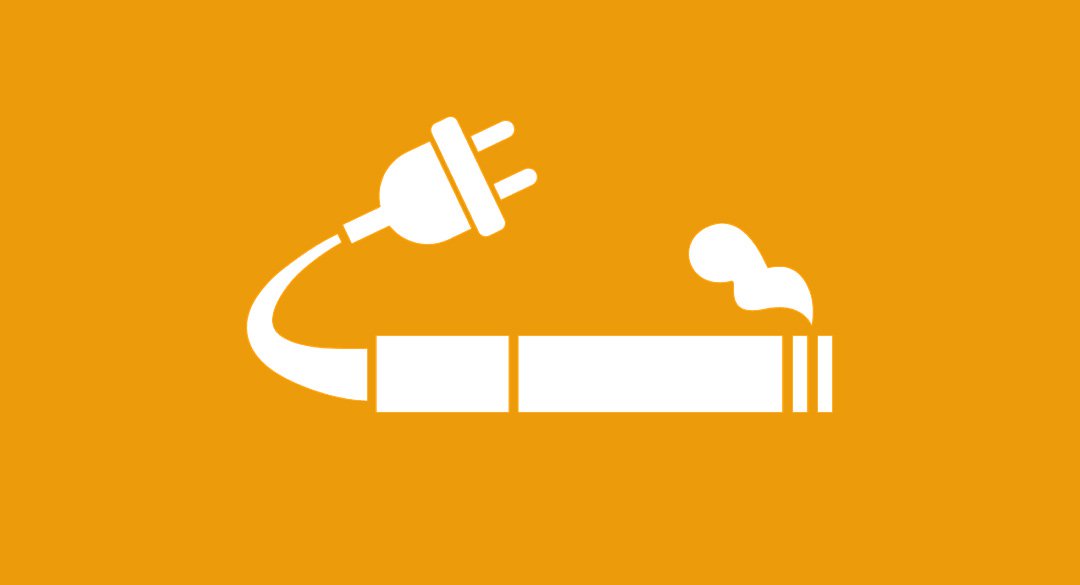
Electronic cigarettes — also known as e-cigarettes — are devices that deliver nicotine in vapor form to users via a simple battery-powered system. Electronic cigarettes look like real cigarettes, and some even have an illuminated tip! The manufacturers of electronic cigarettes promote the devices as alternatives to conventional cigarettes and as smoking cessation tools.
What’s the point of electronic cigarettes?
Electronic cigarettes were created to provide smokers with another tool to help wean them off tobacco products and eventually stop smoking. Nicotine is the main addictive component in tobacco. So, just like the nicotine patch and nicotine gum, electronic cigarettes should satisfy smokers’ cravings and allow them to stop using tobacco products, which contain many toxins and cancer-causing chemicals in addition to nicotine.
Electronic cigarettes might — theoretically — prove more effective than other forms of nicotine replacement because they more closely mimic the act of smoking, and thus serve as a more lifelike substitute. However, although research has shown that electronic cigarettes can help people stop smoking, there haven’t been any head-to-head comparisons with other forms of nicotine replacement in large populations.
So electronic cigarettes are a good thing, right?
Not so fast. The FDA highlights the following safety concerns with regard to electronic cigarettes:
- Electronic cigarettes have been associated with dry cough, and mouth and throat irritation.
- Electronic cigarettes may reduce lung function according to some studies, although other studies haven’t found a substantial effect.
- Cancer-causing chemicals have been found in the delivery cartridges; in addition, recent analysis of the aerosols from e-cigarettes has identified high levels of formaldehyde, a carcinogen associated with lung cancer as well as sinus cancer and leukemia.
- Electronic cigarettes can cause a large rise in the blood level of nicotine, and nicotine isn’t entirely harmless; besides being addictive, it can raise the heart rate and blood pressure and damage small blood vessels, such as the coronary arteries, which supply blood to the heart.
- No study has yet adequately assessed the long-term safety of electronic cigarettes.
Are there other concerns about electronic cigarettes?
Yes. The manufacturers of electronic cigarettes market them to young people, putting them at risk for developing a nicotine addiction that could lead to eventual tobacco use. Electronic cigarettes are produced in a variety of flavors—including chocolate, vanilla, strawberry, and mint—that are meant to appeal to adolescents. More teenagers are now using e-cigarettes than tobacco products, and they are using them purely recreationally, not to treat nicotine addiction. This is a very worrisome trend, given the concerns above and the possibility that e-cigarettes could serve as a gateway drug leading to substance abuse. Currently, electronic cigarettes can be sold without age restrictions, and they don’t require warning labels.
What if I use electronic cigarettes only recreationally?
We discourage everyone — particularly young people — from using electronic cigarettes as a recreational drug. We don’t know their long-term safety, and nicotine addiction is a real concern.
So what’s the best option if I want to quit smoking?
If you want to stop smoking, there are alternatives whose efficacy and side effects are better understood. These range from forms of nicotine replacement, to prescription medications, to interventions such as behavioral therapy. If you’re having trouble quitting smoking on your own, talk to your primary care physician, who will be delighted to help you sort through the alternatives and come up with a plan that best suits your needs.
Ready to kick the habit? Read 10 Tips to Quit Smoking for Good.
The One Medical blog is published by One Medical, a national, modern primary care practice pairing 24/7 virtual care services with inviting and convenient in-person care at over 100 locations across the U.S. One Medical is on a mission to transform health care for all through a human-centered, technology-powered approach to caring for people at every stage of life.
Any general advice posted on our blog, website, or app is for informational purposes only and is not intended to replace or substitute for any medical or other advice. 1Life Healthcare, Inc. and the One Medical entities make no representations or warranties and expressly disclaim any and all liability concerning any treatment, action by, or effect on any person following the general information offered or provided within or through the blog, website, or app. If you have specific concerns or a situation arises in which you require medical advice, you should consult with an appropriately trained and qualified medical services provider.